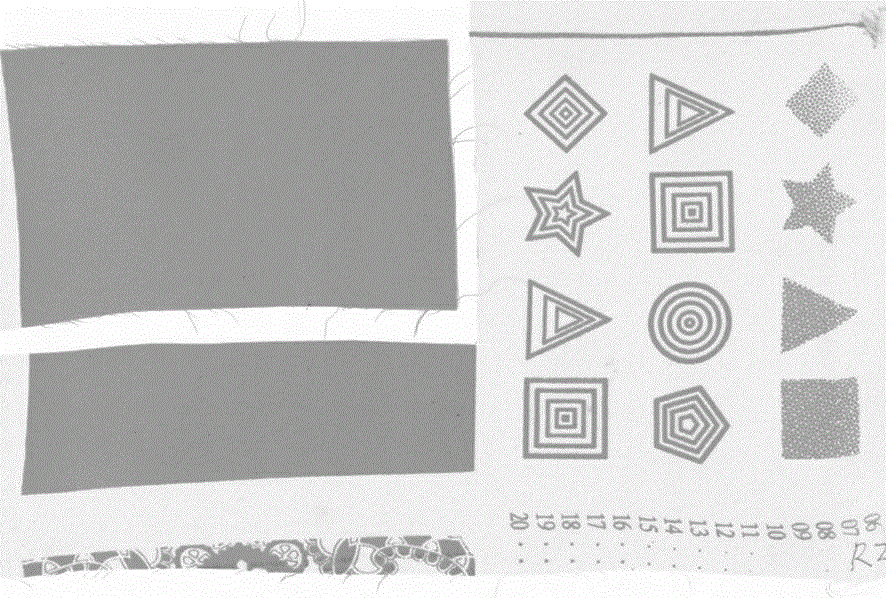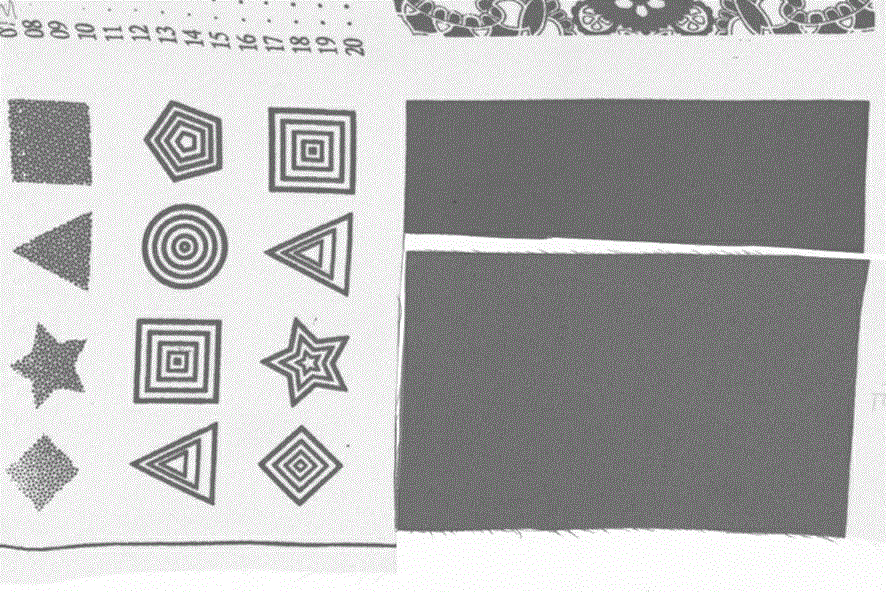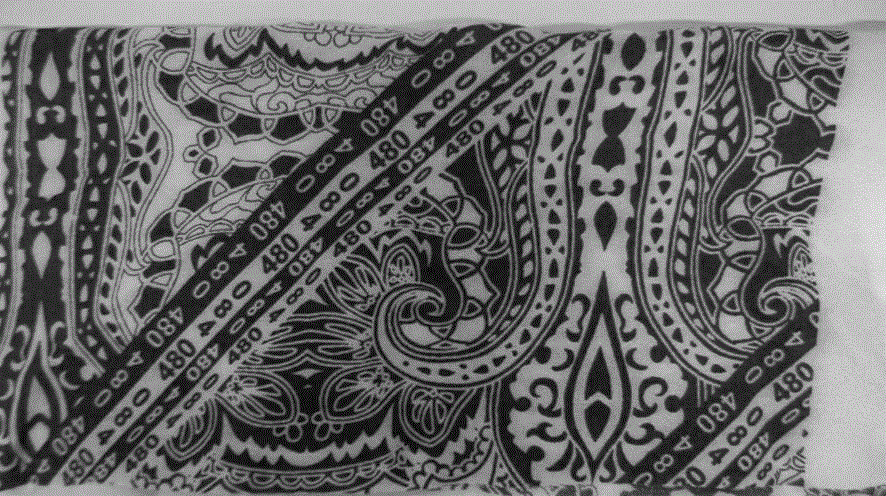Function prepolymer and preparation method and application thereof
A prepolymer and functional technology, applied in the field of textile printing and dyeing, can solve the problems of inapplicability to direct printing, short printing process, poor printing color fastness, etc., and achieve excellent color fastness, high color fastness and bright colors Effect
- Summary
- Abstract
- Description
- Claims
- Application Information
AI Technical Summary
Problems solved by technology
Method used
Image
Examples
Embodiment 1
[0046] 1) Mix 15g butyl acrylate, 3g acrylonitrile, 0.5g acrylic acid, 0.5g N-methylolacrylamide, 3g ethyl acrylate, 0.5g methacrylic acid, 0.5g 1,4-cyclohexanedimethanol diacrylate, Mix 0.5g bis-trimethylolpropane tetraacrylate, 0.5g emulsifier SP-80, 0.5g sodium dodecylsulfonate, 0.5g isomeric tridecyl alcohol polyoxyethylene ether (12) and 60g water, And fully stirred into 85g emulsion A;
[0047] 2) Dissolve 1g of ammonium persulfate in 15g of water at room temperature, and fully stir to form 16g of initiator solution A;
[0048] 3) Take half 42.5g of the mass of the emulsion A and 8g of the half mass of the initiator solution A and put them into the reaction device of the three-necked flask, stir while heating, and raise the temperature to 70°C. When the temperature reaches 70°C, under stirring, slowly add the remaining emulsion A and initiator solution A dropwise at the same time, and the dropping time is 120 minutes. After the dropwise addition was completed, the stir...
Embodiment 2
[0050] 1) Mix 19g butyl acrylate, 3.5g acrylonitrile, 0.4g acrylic acid, 0.6g N-methylolacrylamide, 4g ethyl acrylate, 0.5g methacrylic acid, 0.2g 1,4-cyclohexanedimethanol diacrylate , 0.2g bis-trimethylolpropane tetraacrylate, 0.5g isomeric tridecyl alcohol polyoxyethylene ether (8), 0.5g sodium dodecylsulfonate, 1.5g fatty alcohol (C 12-18 ) Polyoxyethylene ether (12) sodium sulfonate mixed with 60g of water, and fully stirred to form emulsion B;
[0051] 2) Dissolve 1g of ammonium persulfate in 8.1g of water at room temperature, and fully stir to form initiator solution B;
[0052] 3) Take half of the mass of the emulsion B and half of the mass of the initiator solution B and put them into the reaction device of the three-mouth sesame cake, stir while heating, and raise the temperature to 75°C. When the temperature reaches 75°C, under stirring, slowly add the remaining emulsion B and initiator solution B dropwise at the same time, and the dropping time is 110 minutes. Af...
Embodiment 3
[0054] 1) Mix 18.0g butyl acrylate, 2.5g acrylonitrile, 0.5g acrylic acid, 0.5g N-methylolacrylamide, 2.0g isotridecyl acrylate, 1.0g ethylene glycol dimethacrylate, 0.2g Mix pentaerythritol tetraacrylate, 0.5g emulsifier SP-80, 1.0g sodium dodecylsulfonate, 0.5g isomeric tridecyl polyoxyethylene ether (12) and 60g water, and fully stir to form emulsion C;
[0055] 2) Dissolve 1.0g of ammonium persulfate in 11.8g of water at room temperature, and fully stir to form initiator solution C;
[0056] 3) Add half of the mass of the emulsion C and half of the mass of the initiator solution C into the reaction device, stir while heating, and raise the temperature to 72°C. When the temperature reaches 72°C, under stirring, slowly add the remaining emulsion C and initiator solution C dropwise at the same time, and the dropping time is 120 minutes. After the dropwise addition was completed, the stirring was continued for 120 min to obtain the functional prepolymer C.
PUM
 Login to View More
Login to View More Abstract
Description
Claims
Application Information
 Login to View More
Login to View More - R&D
- Intellectual Property
- Life Sciences
- Materials
- Tech Scout
- Unparalleled Data Quality
- Higher Quality Content
- 60% Fewer Hallucinations
Browse by: Latest US Patents, China's latest patents, Technical Efficacy Thesaurus, Application Domain, Technology Topic, Popular Technical Reports.
© 2025 PatSnap. All rights reserved.Legal|Privacy policy|Modern Slavery Act Transparency Statement|Sitemap|About US| Contact US: help@patsnap.com



